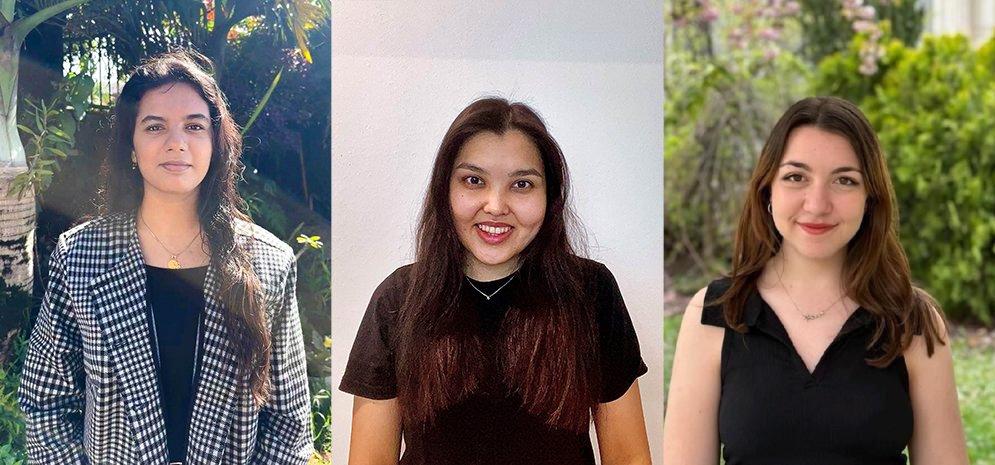The Quantum Leap follows AI

Breaking News:
Kathmandu Nepal
Donnerstag, Apr. 24, 2025

The experts and young academics agree on one thing: “After the AI boom, there will be a quantum leap. Actually, it is already taking its turn,” says Mokhina. Investments in the development of new technology have already increased this year. And it’s not just research that benefits: “Many start-ups working on quantum technology are receiving considerable investments.” The three women began a project study in this field of research last year. Mokhina recalls: “Many students were still skeptical and hesitant about the topic. I was lucky to find courageous colleagues in my fellow students Sude and Bhavya to conduct research together.”
Quantum GPT for Supply Chains
The result is impressive: “We have developed a custom ChatGPT for quantum computing methods to address the problems in supply chains,” says Sude. It aims to help people understand how quantum computing works and how they can improve supply chains. But before the GPT could go live, it needed data – as is often the case with large language models (LLMs). “We conducted a state-of-the-art literature review and fed the system with the most important information from various academic sources.”
The team focused on the three areas within supply chain management: vehicle routing, inventory management, and risk management. The ultimate solution: “The right algorithm can help predict hazards, calculate alternative routes, or estimate potential demand spikes,” explains Bhavya. The GPT explains the appropriate Quantum Approximation Optimization Algorithm (QAOA) for the scenarios, which can be used to find the cheapest and fastest route. According to Mokhina, solving supply chain problems is one of the most promising application areas for quantum technology, alongside the finance and energy sectors.
Quantum GPT is ideal for beginners: “It explains the basics and the first steps, regardless of prior knowledge, because that’s what we’ve experienced and what we want to share with others,” says Mokhina, adding: “To keep pace with this technology, anyone can familiarize themselves with quantum computing using our GPT.”
Challenges in the Quantum Cosmos
The three students see three challenges for further development: finding a stable qubit, developing better quantum algorithms, and overcoming hardware limitations. In quantum technology, qubits replace classic bits, which consist only of zeros and ones. They are not limited to these two states and can therefore calculate many variants simultaneously. One problem with the technology is noise, which distorts the state of a qubit. Sude explains how it arises: “While hallucinations in LLMs are caused by the training data, noise is mainly caused by physical factors. Through interactions with the environment – such as air molecules, electromagnetic fields or thermal radiation – the qubit loses its coherent state.”
Solutions are usually best found in a team, and in this case, everything fell into place. Bhavya looks back: “We met very often via Zoom or Google Meet and regularly exchanged our results and ideas.” The three followed a strategic plan: Mokhina focused on risk management, Sude on vehicle routing, and Bhavya mainly dealt with inventory management. They were supported and encouraged by David Wuttke: “Professor Wuttke was very open to the topic and didn’t question our abilities. I appreciate that our professors look beyond the scope of our degree program and encourage us to do things we wouldn’t have thought possible before,” says Mokhina.
Moving Forward Together
The young woman is excited about the future: “We can already feel the race for the most advanced quantum technologies and will see how Germany will fare. A lot of investment is flowing into this area, but American companies are still ahead.” That is precisely why Bhavya sees great opportunities for herself: “I can well imagine working for a company in this field if the opportunity arises, preferably in Germany.” Sude feels the same way: “I’m happy here at the moment and after I graduate, I’d like to stay for a while and take my first steps into professional life.”
Anyone who would like to try out Quantum GPT and learn more about the topic can contact the LLM or the developers directly with their questions: ”We have also enabled the coding functions. It not only provides theoretical information about quantum computing, but also Python code that anyone can run on their own laptop. You can experiment and play around with it,” promises Mokhina.
To connect for cooperation in the area of quantum technologies, simply send an email to mokhina.dustmurodova@tum.de .
Die TUM Campus Heilbronn gGmbH
Bildungscampus 2
74076 Heilbronn
Telefon: +49 (0) 7131 264180
Telefax: +49 (7131) 645636-27
https://www.chn.tum.de/de
![]()